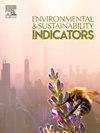River water quality monitoring using machine learning with multiple possible in-situ scenarios
IF 5.4
Q1 ENVIRONMENTAL SCIENCES
引用次数: 0
Abstract
Water quality is influenced by a wide range of factors, but it is expensive and technically difficult to take into account every factor, which leaves out quality variations. The assessment process is made more difficult by the need for different evaluation indicators for various water uses. Furthermore, many water quality factors have complex nonlinear relationships that are difficult for these methods to handle. On the other hand, because machine learning can quickly identify underlying principles and handle complex data with efficiency, it offers a promising approach. The gap involves addressing complex relationship and environmental factors when predicting water quality in rivers. The purpose of this study is to evaluate the feasibility of estimating the Gombak River's Water Quality Index (WQI) using machine learning, and to identify appropriate models based on statistical performance metrics. The study looks into the possibility of estimating WQI solely using dissolved oxygen (DO) and pH as predictors because the chemical parameters in the current Malaysian WQI calculation method takes some time to compute. This research provides insight into the accuracy, precision, and general performance of these models in predicting water quality by looking at the residuals of various scenarios and evaluating performance metrics across different machine learning models. This study provides insights into the potential of machine learning for improving water quality assessment and management practices. Future studies should concentrate on resolving these issues and investigating other elements, such as environmental variables, land use patterns, and human activity, that may affect the forecast of water quality.
求助全文
约1分钟内获得全文
求助全文
来源期刊

Environmental and Sustainability Indicators
Environmental Science-Environmental Science (miscellaneous)
CiteScore
7.80
自引率
2.30%
发文量
49
审稿时长
57 days
 求助内容:
求助内容: 应助结果提醒方式:
应助结果提醒方式:


